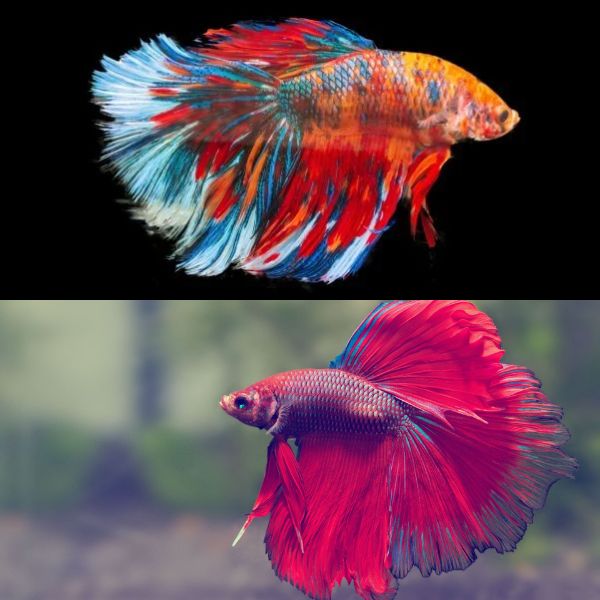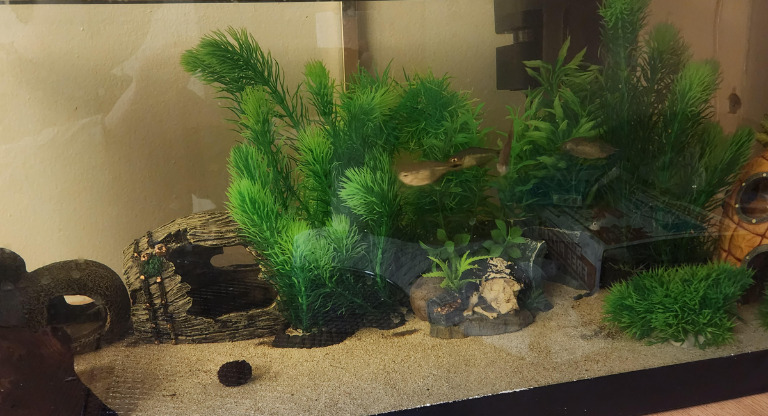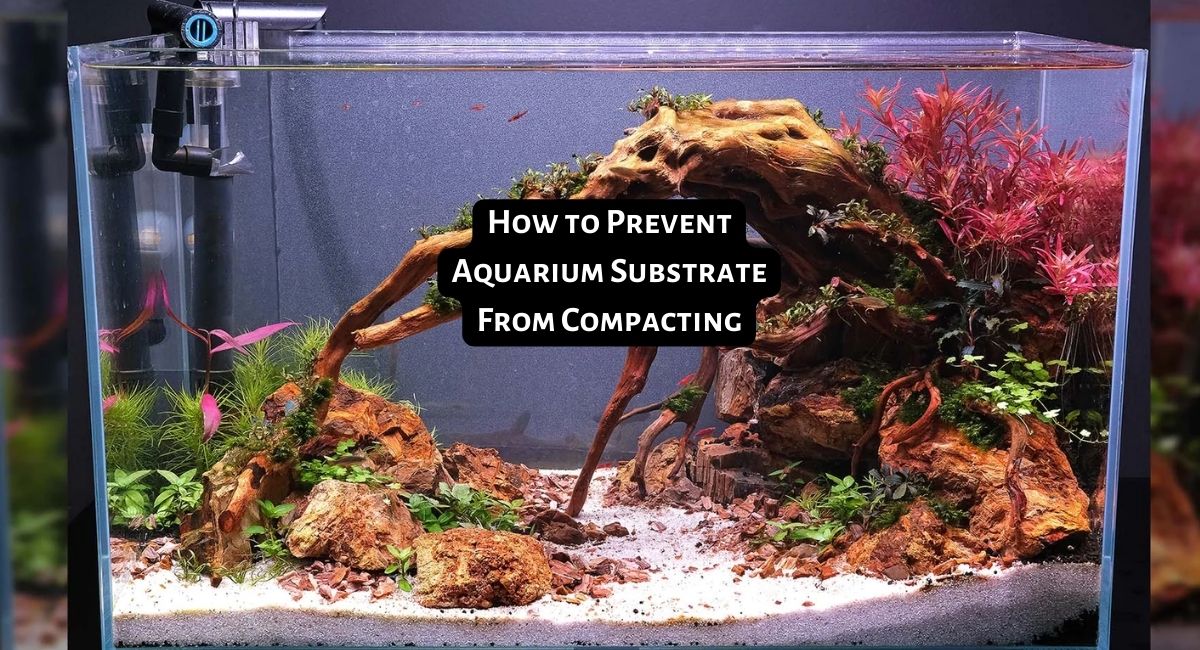Smartplantedaquarium.com participates in affiliate marketing programs. We may earn commissions on purchases made through our affiliate links. This doesn't affect our content or recommendations and we only recommend products we would put in our own tanks.
Betta fish are one of the most popular aquarium fish for both beginner and experienced aquarists. With their bright colors, easy care needs, and interesting personalities, it’s easy to see why these amazing creatures are so loved. However, when setting up a tank for your Betta fish an important factor to consider is the substrate.
The type of substrate you use in your tank can make all the difference in how healthy and happy your Betta will be. This blog post will discuss some of the best substrates for Betta fish and what to look out for when picking one that’s right for your tank.
TL;DR
If you have a betta fish, you want to make sure they have the best environment they can – this includes picking the right substrate. Gravel and sand are the two most common substrates used; both have their advantages depending on your needs. Ultimately, the best substrate for your betta fish is one that meets their specific requirements and is easy to maintain. Be sure to do proper research before deciding which substrate works best for your betta fish. Good luck! TL:DR: When selecting a substrate for a betta fish, consider its specific needs and how easy it is to maintain. Do adequate research before making a decision.
Contents
Best Substrate for Betta Fish
When choosing a substrate for your Betta fish tank, it’s important to consider a few factors. You want something that is safe and won’t harm your Betta, provides good filtration, and something you are comfortable with cleaning or replacing periodically. In this blog post we will discuss the best substrates for Betta fish tanks and what to look out for when picking one for your tank.
What are Betta Fish and their Types?
Betta fish, also known as Siamese Fighting Fish, are a type of freshwater fish native to Asia. They are often brightly colored and have long, flowing fins that make them popular in home aquariums. Betta fish come in many types and varieties, each with its own unique color patterns and fin shapes. The most common types of betta fish are the Plakat Betta, Halfmoon Betta, Crowntail Betta, Doubletail Betta and Deltatail Betta. Each type has its own characteristics and preferences for substrate which can affect their health and happiness in an aquarium environment.
Choosing the best substrate for your betta fish is important for providing a healthy habitat where they can thrive. Substrate is the material at the bottom of your aquarium, typically gravel or sand. It serves as a decorative accent and also acts as a filter to keep waste materials out of the water. The right substrate will help keep your betta fish healthy by providing natural filtration and preventing ammonia buildup in your tank.

Do Betta Fish Require Substrate?
Betta fish, also known as Siamese fighting fish, are a popular choice among aquarium hobbyists. This is largely due to their stunning colors and ease of care. A common question amongst betta owners is whether or not they need substrate in their tank.
The answer to this question depends on the type of aquarium you have set up for your betta fish. If your aquarium has a lot of decorative items like rocks, logs, and plants then adding substrate can help enhance the aesthetic appeal of the tank. Additionally, if you plan on keeping any live plants in your aquarium then it’s necessary to add substrate because it provides an environment for root growth.
However, if you don’t have any decorations or live plants in the aquarium then substrate is not necessary. Betta fish can live in a tank without substrate, but the bottom of the tank will look bare and unappealing.
Is Substrate Helpful for Betta Fish?
When it comes to caring for your betta fish, many aquarists wonder if substrate is necessary. Substrate can provide a number of benefits to help your betta fish thrive and create a beautiful environment in your aquarium. From the type of substrate you choose to how much you use, understanding the basics of substrate selection and usage can help make sure that your betta fish stays healthy and happy!
Substrates can be beneficial for various reasons. For one thing, they can help keep water levels stable by providing buffer zones between different levels. This prevents sudden shifts in pH levels that could affect the health of your fish.
Are you feeling overwhelmed by the process of choosing the best substrate for your aquarium? Do you want to ensure that your aquarium is set up for success? Our guide on choosing aquarium substrate is the ultimate resource for anyone looking to create a healthy and thriving ecosystem for their fish and plants. From the benefits of different substrates to step-by-step instructions on setting up your aquarium, our guide has everything you need to know. Check it out now!
Betta Fish Aquarium Set-Up Guide
Setting up an aquarium for your Bettas is a fun and rewarding experience, but you want to make sure that you choose the best substrate for their needs. A substrate refers to any material placed in the bottom of an aquarium, such as sand or gravel. Different substrates have different effects on water quality and can provide essential nutrition to fish. In this article, we’ll cover some of the most popular options for best substrate for Betta Fish so that you can make an educated decision in setting up your aquarium.
What’s the Best Aquarium size for Betta Fish?
When it comes to selecting the best aquarium size for your betta fish, there are a few things to consider. First and, you want to make sure the tank is large enough so that the living environment is comfortable for your fish. A good rule of thumb is that an appropriate size tank should hold at least five gallons of water – this will give your betta plenty of room to move around, plus a filter and heater can be added if desired. Additionally, when selecting a tank size you’ll need adequate space for decor such as live plants, driftwood, rocks or any other decorations you may have in mind.
What Do Betta Fish Like in Their Tank?
In addition to a substrate, betta fish also need other decorations in their tank. Providing your betta with live or fake plants can help them feel secure, as they like to hide among foliage. You can also use rocks, driftwood and other decorations to give your betta places to explore and hide. These items should be thoroughly cleaned and boiled before introducing them into the tank. Finally, adding a filter to your betta’s tank is important for keeping the water clean and maintaining optimal water quality. This will help keep your fish healthy and happy!
Overall, there are many different substrates that can work well for betta fish tanks; it really depends on personal preference. Be sure to consider all of the factors listed above and make sure that the substrate you select is safe for your fish before making a decision. With the right type of substrate, your bet will have a clean and comfortable living environment!
What is the Best Substrate for Betta Fish?
By choosing the right substrate for your betta tank, you can create an aesthetically pleasing aquascape while providing them with a safe and healthy home to swim around in! Hopefully this list of popular substrates will help you find the perfect fit for your betta’s habitat.
- Gravel – Gravel is an affordable and popular substrate choice for bettas. It comes in a variety of colors to create aesthetically pleasing aquascapes, and many brands are designed specifically for use in fish tanks. Be sure to purchase aquarium-safe gravel, free of any impurities that could be toxic to the fish.
- Sand – Sand creates a natural environment for your betta and allows them to easily dig up their food from underneath it. It also softens the water by providing calcium sulfate which helps keep fins healthy and promotes better oxygen exchange. When choosing sand, look for one labeled as “aquarium safe” or “silica.” The finer variation is ideal when using sand as a substrate for bettas.
- Marbles – Another popular option is an acrylic-based marble or glass bead substrate. These are easy to clean and come in various sizes, colors,, and patterns that can create aquascapes. Plus, they’re not prone to having algae growth like many other substrates.
- Eco-Complete – Eco-complete is a pre-made substrate for fish tanks that contains all the minerals and nutrients that live plants need to thrive, making it an ideal choice for planted aquariums. It also helps keep pH levels stable, prevents algae growth, and can even help reduce nitrate and ammonia levels in the water.
Don’t settle for mediocre substrate for your African dwarf frogs! Click here to read our guide on the best aquarium substrate for african dwarf frogs options for these adorable aquatic pets.
1. Gravel for Betta Fish
Gravel is one of the most commonly used substrate for betta fish. It’s easy to find and relatively inexpensive, making it a popular option for many aquarium owners. While it can be aesthetically pleasing, there are both advantages and disadvantages to using gravel as a substrate in your aquarium.
Overall, gravel can be a great substrate choice for betta fish tanks as long as you take the time to properly clean and maintain it. Adding other elements like plants, rocks, driftwood, or decorations can also help create an attractive environment that will suit your betta’s needs.
| Advantages | Disadvantages |
|---|---|
| Creates an attractive visual effect for a natural-looking tank. | Can give off an unpleasant smell if not cleaned regularly. |
| Helps maintain water clarity and trap beneficial bacteria. | Particles can cause irritation or infection in fish. |
| Available in different colors, shapes, and sizes. | Difficult to clean, especially embedded debris. |
| Can contribute to high ammonia levels if not properly maintained. |
2. Sand for Betta Fish
Sand can be a good substrate option for Betta fish, but it is important to choose the right type of sand and to keep it clean to ensure the health of your fish. However, not all sand is suitable for aquarium use, and some types can be harmful to fish. It is important to use aquarium sand that is specifically designed for this purpose. Make sure to avoid using sand from beaches, rivers, or other natural sources, as these can contain harmful bacteria, parasites, or toxins.
Sand offers several advantages over other substrates:
| Advantages | Disadvantages |
|---|---|
| Offers a natural look and feel to the tank. | Larger grains can be abrasive on a betta’s delicate fins. |
| Provides protective cover for bottom-dwelling fish, such as bettas. | Sand can be difficult to clean and may require frequent siphoning or vacuuming. |
| Gives beneficial bacteria a surface to attach to – helping maintain water quality. | Compacted sand can reduce water flow and oxygenation. |
| The fine particles help trap debris, so less cleaning is required. | Fine particles of sand can easily become suspended in the water column, clouding the aquarium. |
3. Marbles for Betta Fish
Marbles are a popular choice for betta tank substrate but it is important to consider both the pros and cons before making your decision. While marbles may look nice and not require too much maintenance, they don’t offer much in terms of filtration or comfort for your fish – which should always come first!
| Advantages | Disadvantages |
|---|---|
| Visually pleasing aesthetic with various colors and sizes available. | Marbles don’t provide much biological filtration. |
| Easy to care for and clean with an aquarium vacuum. | Not suitable for fish that like to dig in the substrate. |
| Marbles can be slippery and may cause injury to fish if they hit their fins on sharp edges. |
4. Eco-Complete for Betta Fish
Eco-Complete is one of the best substrate choices for Betta Fish. This fine aquarium gravel has a natural balanced pH which helps to maintain a healthy environment for your fish. It also provides beneficial bacteria and traces of iron, calcium, and other essential trace elements which are vital for their health and well-being. Additionally, it will buffer the water, making it less prone to drastic changes in pH due to water changes or overfeeding.
| Advantages | Disadvantages |
|---|---|
| Maintains a natural balanced pH | Can be difficult to clean without disturbing the beneficial bacteria colonies |
| Provides beneficial bacteria | Can be expensive depending on the quality and quantity purchased |
| Includes essential trace elements | Easily compacted which can reduce oxygenation in the water for your Betta Fish. |
| Buffers the water |
Conclusion
When selecting substrate for your betta fish tank it’s important to choose one that won’t alter the water chemistry too much. Common substrates used for betta tanks are small gravel, sand, and soil. Each type has its own pros and cons so it’s best to research each option carefully before making a decision. In addition to looking for non-toxic materials that won’t cause water quality issues, you should also select a substrate that is safe for your betta fish to ingest. Some aquarium substrates are sharp and can injure betta fish if they attempt to eat it.
African cichlids are known for their vibrant colors and active personalities, but did you know that the right substrate can also help promote their health and well-being? Our comprehensive guide to the best aquarium substrate for African cichlid covers everything you need to know to select the perfect substrate for your fish. With detailed information on different types of substrate, maintenance tips, and more, our article is a must-read.
Frequently Asked Questions (FAQs)
1. Do betta fish need rocks?
Betta fish do not need rocks in their tank, but some aquarium owners like to add them for decoration. Rocks can provide hiding places and promoting natural behaviors, such as exploring the environment or finding food. However, it is important to make sure the rocks are large enough that they will not be swallowed by a betta fish. Additionally, you should avoid using small sharp rocks that could injure the delicate fins of a betta fish. It is best to use smooth river stones or aquarium-safe gravel specifically designed for use around tropical fish tanks.
2. What do betta fish like the most?
Betta fish prefer a substrate that has some texture, such as sand or fine gravel. They also like to have plenty of plants and areas with slower-moving water for swimming. A dark colored substrate can also help them feel more secure in their environment. Additionally, betta fish love live food such as bloodworms, brine shrimp and daphnia. Lastly, betta fish are very territorial so adding hiding spots like caves or rocks will help them feel safe and secure in their environment.
3. What is the best habitat for a betta fish?
The best habitat for a betta fish is a tank of at least 5 gallons, with an aquarium heater and filter, and live plants such as Java Moss or Dwarf Hairgrass. The water temperature should be kept between 76-82°F and the pH level in the range 6.0-7.5. Decorative objects like rocks and driftwood can also provide valuable hiding spots for the fish to feel safe in its environment. A substrate that provides plenty of oxygen and nutrients to the aquatic life is important for supporting healthy bacteria colonies that help keep your tank clean. Natural gravel substrates are typically recommended because they provide essential minerals that encourage healthy growth in fish, but sand or soil substrates are also acceptable options if you prefer them.






